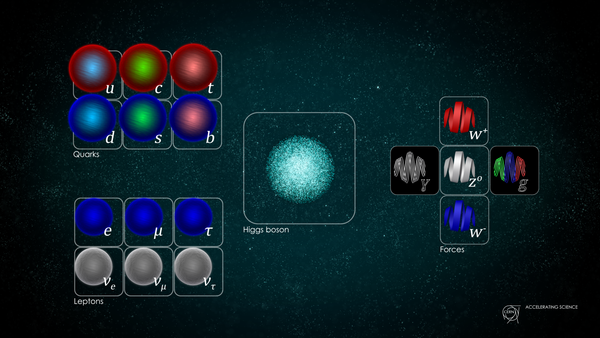The hunt for supersymmetry: Reviewing the first run
What do dark matter, Higgs bosons, the electron dipole moment, topological superconductors and quantum loops have in common? These are exotic entities that scientists have been using to solve some longstanding problems in fundamental physics. Specifically, by studying these entities, they expect to discover new ingredients of the universe that will help them answer why it is the way it is. These ingredients could in come in a staggering variety, so it is important for scientists to narrow down what they’re looking for – which brings us to the question of why these entities are being studied. A brief summary:
- Dark matter is an exotic form of matter that is thought to interact with normal matter only through the gravitational force. Its existence was hypothesized in 1932-1933. Its exact nature is yet to be understood.
- Quantum loops refer to an intricate way in which some heavier particles decay into sets of lighter particles, involving the exchange of some other extremely short-lived particles. They have been theoretically known to exist for many decades.
- Topological superconductors are exotic materials that, under certain conditions, behave like superconductors on their surface and as insulators underneath. They were discovered fairly recently, around 2007, and how they manage to be this way is not fully understood.
- The Higgs boson‘s discovery was announced in July 2012 (and verified by March-June 2013). Math worked out on paper predicts that its mass ought to have been very high – but it was found to be much lower.
- The electron dipole moment is a measure of how spherical the electron is. Specifically, the EDM denotes how evenly the electron’s negative charge is distributed around it. While the well-understood laws of nature don’t prevent the charge from being uneven, they restrict the amount of unevenness to a very small value. The most precise measurement of this value to date was published in December 2013.
Clearly, these are five phenomena whose identities are incomplete. But more specifically, scientists have found a way to use advanced mathematics to complete all these identities with one encompassing theory called Supersymmetry (Susy). Unfortunately for them, the mathematics refuses to become real, i.e. scientists have failed to find evidence of Susy in experiments. Actually, that might be an overstatement: different experiments are at different stages of looking for Susy at work in giving these ‘freaks of nature’ a physical identity. On the other hand, it has been a few years since some of these experiments commenced – some of them are quite powerful indeed – and the only positive results they have had have been to say Susy cannot be found in this or that range.
But if signs of Susy are found, then the world of physics will be in tumult – in a good way, of course. It will get to replace an old theory called the Standard Model of particle physics. The Standard Model is the set of mathematical tools and techniques used to understand how fundamental particles make up different objects, what particles our universe is made of, how quantum loops work, how the Higgs boson could have formed, etc. But it has no answers for why there is dark matter, why the electron is allowed to have that small dipole moment, why topological superconductors work the way they do, why the Higgs boson’s mass is so low, etc.
Early next year, physicists will turn to the Large Hadron Collider (LHC) – which helped discover the Higgs boson in 2012 – after it wakes up from its two-year slumber to help find Susy, too. This LHC of 2015 will be way more powerful than the one that went dormant in early 2013 thanks to a slew of upgrades. Hopefully it will not disappoint, building on what it has managed to deliver for Susy until now. In fact, on April 28, 2014, two physicists from CERN submitted a preprint paper to the arXiv server summarizing the lessons for Susy from the LHC after the first run.



